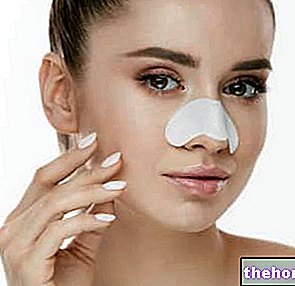What is Elastin?
Elastin is a protein characteristic of the skin, to which it guarantees elasticity and the possibility of deforming when subjected to mechanical tensions.
Produced by the fibroblasts of the dermis, elastin is able to stretch and contract within certain limits without being damaged. In quantitative terms, it represents 2% of the weight of the dermis; secreted in the form of monomer (tropoelastin), it contributes together with the microfibrils of fibrillin to form a three-dimensional network that gives the skin a certain elasticity.

Synthesis
Elastin is synthesized inside the fibroblasts in the form of a monomer called tropoelastin. Tropoelastin is a high molecular weight protein (about 70,000 Dalton) which is characterized by the presence of amino acids such as proline, glycine, alanine and valine.

Tropoelastin molecules are secreted by cells into the extracellular space and arrange themselves in elastic fibers near the plasma membrane, usually in cell surface recesses. The elastic fibers are made up of a "scaffolding of tubular microfibrils, so called because they have a small cylindrical cavity in the center, and of an amorphous matrix which is the predominant part. The tubular microfibrils are made up of a glycoprotein, called fibrillin, and are inextensible ; the amorphous matrix is instead constituted by elastin, responsible for the elastic behavior that gives the name to these fibers.
It is precisely this network formed by elastin that gives the skin its natural elasticity and its ability to resist deformation. This elasticity, however, is limited by the interweaving with collagen fibers that give the skin compactness and resistance to traction.
Degradation
Causes and Consequences of Elastin Degradation
The causes of the degradation of elastin or of the alteration of its structure can be different.
For example, there are situations in which the stretching of the skin exceeds the elastic capacity of elastin. This is the case of a rapid weight gain, which results in the "sagging" of the fabric and the appearance of so-called striae distensae, better known as stretch marks.
Cortisone therapies, especially if prolonged over time, have been shown to reduce the synthesis of elastin, not surprisingly they are well known as responsible for stretch marks.
Another enemy of elastin is aging; especially after 30-40 years, the dermal concentrations of functional elastin decrease, and the skin strongly loses elasticity. This occurs both for a reduction in the synthesis of elastin and for the hyper-activation of enzymatic systems (metalloproteases, specifically elastase) capable of increasing the degradation of elastin, removing its peculiar elasticity. Together with the concentrations of elastin, they also decrease those of collagen, which changes its structure becoming even less elastic and more fibrous.
Elastin and Aging
The turnover of elastin is extremely low, with a half-life approaching the age of the organism. Our body synthesizes elastin throughout development, up to the age of approximately 20. During the aging process the skin progressively loses its elasticity because the "damaged" elastin is either not replaced, or it is replaced by non-functional fibers.
All these microstructural changes of the dermis become visible on the skin surface through the appearance of wrinkles with a decrease in tone and elasticity of the past. Hence the need to adopt cosmetic and nutritional techniques to preserve elastin from degradation and favor it. the synthesis.
Preserve Elastin
There are several possible tools that can be used to promote the synthesis of elastin and reduce its degradation as much as possible. These tools range from prevention to the intake of special supplements, passing through the application of cosmetics rich in ingredients suitable for scope.
Prevention
As mentioned, prevention is one of the tools that can be used to preserve elastin from degradation.
In this regard, we remind you that the first way to achieve this - albeit indirectly - is to protect yourself from UV rays which have been shown to activate, even after a few minutes of exposure to the summer sun, the metalloproteases that degrade the proteins of the dermis. In a skin marked by photoaging, the concentrations of elastin appear higher, but its structure is strongly altered, even on a functional level.
Aesthetic and Cosmetic Treatments
There are many aesthetic or cosmetic treatments that can be carried out to encourage the production of new elastic fibers. These treatments and their main characteristics will be briefly described below.
Exfoliating agents
Promoting skin exfoliation by removing dead cells that tend to "stick" to the surface - thus promoting epidermal turnover and stimulating the formation of new cells - can increase the synthesis of collagen and elastin, improving the latter on an elastic level. This explains the wide use of chemical agents (alpha-hydroxy acids, beta-hydroxy acids, retinoic acid) or physical agents (mineral powders) within cosmetics with a mild and delicate exfoliating effect, or for performing peels with an exfoliating effect. more aggressive and dangerous, although potentially more effective.
In this regard, it should be remembered that, in order to avoid complications and serious side effects, peels - whether chemical or physical - must only be performed by specialized personnel operating in adequate facilities. In the event that the type of peeling that you decide to perform exerts a "very deep exfoliating action, the treatment must be performed only and exclusively by doctors specialized in this" field.
Laser technology
Some laser treatments have also been shown to be able to stimulate the dermal synthesis of collagen and elastin, increasing the local heat and with it the metabolic activity of the fibroblasts.
Antioxidants
The same result obtained with laser technologies can be achieved through the application of topical mixtures of antioxidants, such as retinol and complex A, C and E in general, some plant extracts (undenatured soybean extracts, leaf extracts blackberry) and triterpene alcohols, substances widely used in anti-aging cosmetic formulations, such as the ubiquitous shea butter or avocado oil. Even the intake of oral antioxidants could help protect the elastin from damage caused by reactive oxygen species, better known as free radicals.
Oral Integration of Elastin
Oral integration of elastin, similar to the very popular one with collagen, can enrich the amino acid pool available to the body for the synthesis of elastin, mainly composed of glycine, valine, alanine and proline. However, beyond the cases in which specific deficiencies of these amino acids are recorded, it seems rather optimistic to think of stimulating the synthesis of elastin by taking the substance as such or in hydrolyzed form orally (via the oral route).
Elastin in Cosmetics
The addition of elastin inside cosmetic products has no functional value, since its high molecular weight prevents its absorption by the skin; for this reason, in preparations for cosmetic use the hydrolyzed form is usually used, then broken down into small peptides that compose it.
The resulting protein derivative loses, however, any type of elasticizing properties and the only ascertained effect seems to be that of moisturizing and protecting the stratum corneum. Elastin enhances its action in synergy with hydrolyzed collagen and / or soluble collagen.



























